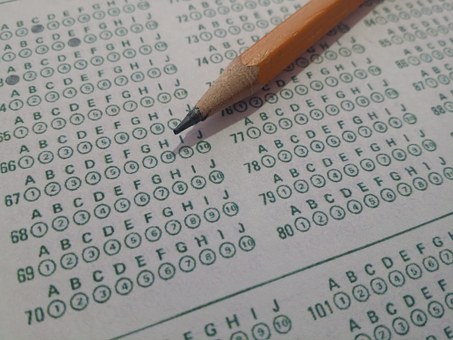
by Erica L. Meltzer | Oct 16, 2017 | Blog, College Admissions
Over the past several decades, acceptance rates at the most selective United States colleges and universities have dropped dramatically. In the mid-1990s, for example, Yale University had an acceptance rate of around 18% for freshman applicants, whereas its freshman acceptance rate in 2017 was only one-third as high. Assuming that acceptances rates for the high school class of 2018 are similar to those for the class of 2017, all freshman applicants to Yale during the 2017-2018 admissions cycle will compete in a pool from which approximately 6% of freshman applicants are accepted.
Which of the following would most weaken the conclusion of this passage?
(A) Applicants who apply to Yale through Single Choice Early Action are accepted at far lower rates than they were in the mid-1990s.
(B) There is a significant difference in the acceptance rates of Single Choice Early Action and Regular Decision Yale applicants.
(C) The most competitive applicants to Yale often gain admission to multiple Ivy League schools.
(D) A smaller percentage of students apply to Yale through Single Choice Early Action than apply Regular Decision.
(E) The demographic makeup of Yale’s freshman class has changed significantly over the past several decades. (more…)
by Erica L. Meltzer | Oct 13, 2017 | Blog
Since everyone now seems to be figuring out that the big tech companies aren’t quite the saviors they’ve made themselves out to be, I figured I’d jump on the bandwagon with yet another cautionary tale.
While browsing The New York Times earlier today, I came across an article discussing the fact that Amazon is now permitting third-party sellers to bid for the top seller listing. When users click on an item, the default “buy now” option may not be Amazon itself, but rather a third-party seller that purchased the right to be listed in the top spot. (more…)

by Erica L. Meltzer | Sep 30, 2017 | Blog, College Admissions, Financial Aid
If you’re an international student interested in applying to American universities, you probably already know that studying in the U.S. isn’t cheap – and sticker prices just keep rising. With tuition and fees at some schools now topping $70,000 a year, the cost of higher education in the U.S., even at public institutions, easily costs tens of thousands more than it does in most other countries.
The good news is that schools do offer some kind of financial assistance for international students – in some cases, very significant amounts of aid. The bad news, however, is that navigating the American system requires a fair amount of savvy.
For example, consider the following list of the 10 universities offering international students the most financial aid, courtesy US News and World Report: (more…)

by Erica L. Meltzer | Sep 27, 2017 | Blog, The New SAT
Nick Anderson at The Washington Post reports that the scoring of the redesigned SAT is causing some confusion:
The perfect score of yore — 1600 — is back and just as impressive as ever. But many students could be forgiven these days for puzzling over whether their own SAT scores are good, great or merely okay.
The first national report on the revised SAT shows the confusion that results when a familiar device for sorting college-bound students is recalibrated and scores on the admission test suddenly look a bit better than they actually are. (more…)

by Erica L. Meltzer | Sep 23, 2017 | Blog
The ACT has recently made a somewhat under-reported change to its accommodation policies.
In the past, students with extra time who took the non-Writing version were given 5 hours to complete all four multiple-choice sections, whereas students who took the Writing version were given 6 hours for the four multiple-choice sections plus the Essay.
Although students could not move back and forth between sections, they could divide up the time in any way they wanted — so if they wanted to spend an extra 10 minutes on Reading, for example, they could potentially “borrow” that time from the less important Essay. For a slow reader with good comprehension, those 10 minutes could easily make a difference of two or three points.
Students not taking the Writing version could still divide their 5 hours as they wanted; however, they did not have the option of borrowing against the Essay, putting them at a potentially significant disadvantage. (more…)

by Erica L. Meltzer | Sep 21, 2017 | Blog, College Admissions
Note: I originally published this piece in 2011, but with the addition of the August SAT, it seems particularly relevant. Whereas the October SAT was the make-it-or-break-it test for a lot of seniors in the past, the possibility of just one more retake in October might now seem very appealing. Here are some things to keep in mind if you’re trying to decided whether to make one last go.
If your scores are borderline, how do you decide whether it’s worth it to go all out for a school or simply let it drop? In other words, at what point is it truly worth writing that supplement and shelling out $75 for an application? (more…)




